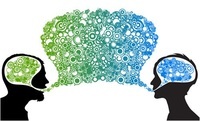
Professional Communication (Veterinary)
Quiz
•
Professional Development
•
9th - 12th Grade
•
Medium
Jennifer DeForge
Used 80+ times
FREE Resource
Enhance your content in a minute
26 questions
Show all answers
1.
MULTIPLE CHOICE QUESTION
2 mins • 1 pt

Two major types of communication are:
Written & Perceived
Assumption & Perception
Verbal & Non-Verbal
Happy & Sad
2.
MULTIPLE SELECT QUESTION
2 mins • 1 pt

Example(s) of verbal communication: (choose all that apply)
Phone conversation
Smiling
Making eye contact
Writing an email
Using TikTok
3.
MULTIPLE SELECT QUESTION
2 mins • 1 pt

Non-verbal communication: (choose all that apply)
Listening to a voicemail and taking down a message
Face-to-face conversation
Having a telephone conversation
Making eye contact
Waving at someone
4.
MULTIPLE CHOICE QUESTION
2 mins • 1 pt

Which of the following is a barrier to effective communication?
Judgemental mindset
Not actively listening
Lack of professional (work appropriate) vocabulary
All the answers are barriers to effective communication
5.
MULTIPLE CHOICE QUESTION
2 mins • 1 pt

Which is NOT important for effective communication?
Being able to see someone during the communication process
Making eye contact when speaking/listening
Using appropriate body language
Using the appropriate tone and infections
Avoiding slang
6.
MULTIPLE SELECT QUESTION
2 mins • 1 pt

In order to comprehend a message, you must: (choose all that apply)
Use a telephone
Wear professional attire
Send a text message or email
Actively listen to the speaker
Consider the other person's point of view
7.
MULTIPLE CHOICE QUESTION
2 mins • 1 pt

All of the following are examples of active listening, EXCEPT:
Showing interest in the message, smiling
Focusing on the patient only and not on the client speaking
Making eye contact with the messenger
Not interrupting the messenger
Create a free account and access millions of resources
Create resources
Host any resource
Get auto-graded reports

Continue with Google

Continue with Email

Continue with Classlink

Continue with Clever
or continue with

Microsoft
%20(1).png)
Apple
Others
Already have an account?
Similar Resources on Wayground

0 questions
Ch. 9 Communication
Quiz
•

0 questions
Business and Professional Communication
Quiz
•

0 questions
Introduction to Professional Communication
Quiz
•

0 questions
Professional Communication
Quiz
•

0 questions
Communication Skills
Quiz
•

0 questions
Communications Final Exam
Quiz
•

0 questions
Introduction to Professional Communication
Quiz
•
Popular Resources on Wayground

5 questions
This is not a...winter edition (Drawing game)
Quiz
•
1st - 5th Grade

15 questions
4:3 Model Multiplication of Decimals by Whole Numbers
Quiz
•
5th Grade

25 questions
Multiplication Facts
Quiz
•
5th Grade

10 questions
The Best Christmas Pageant Ever Chapters 1 & 2
Quiz
•
4th Grade

12 questions
Unit 4 Review Day
Quiz
•
3rd Grade

10 questions
Identify Iconic Christmas Movie Scenes
Interactive video
•
6th - 10th Grade

20 questions
Christmas Trivia
Quiz
•
6th - 8th Grade

18 questions
Kids Christmas Trivia
Quiz
•
KG - 5th Grade



